Share the post "Kicking a Soccer Ball (Kick High and Far with Power!)"
Some people say that soccer is just kicking a soccer ball and running around, but little do they know!
Kicking a soccer ball requires technique, accuracy, and power to hit it on target. There are three forms of kicking a ball; passing, shooting, and clearing.
We’ll examine the skills required to play soccer and what you need to kick a ball with power.
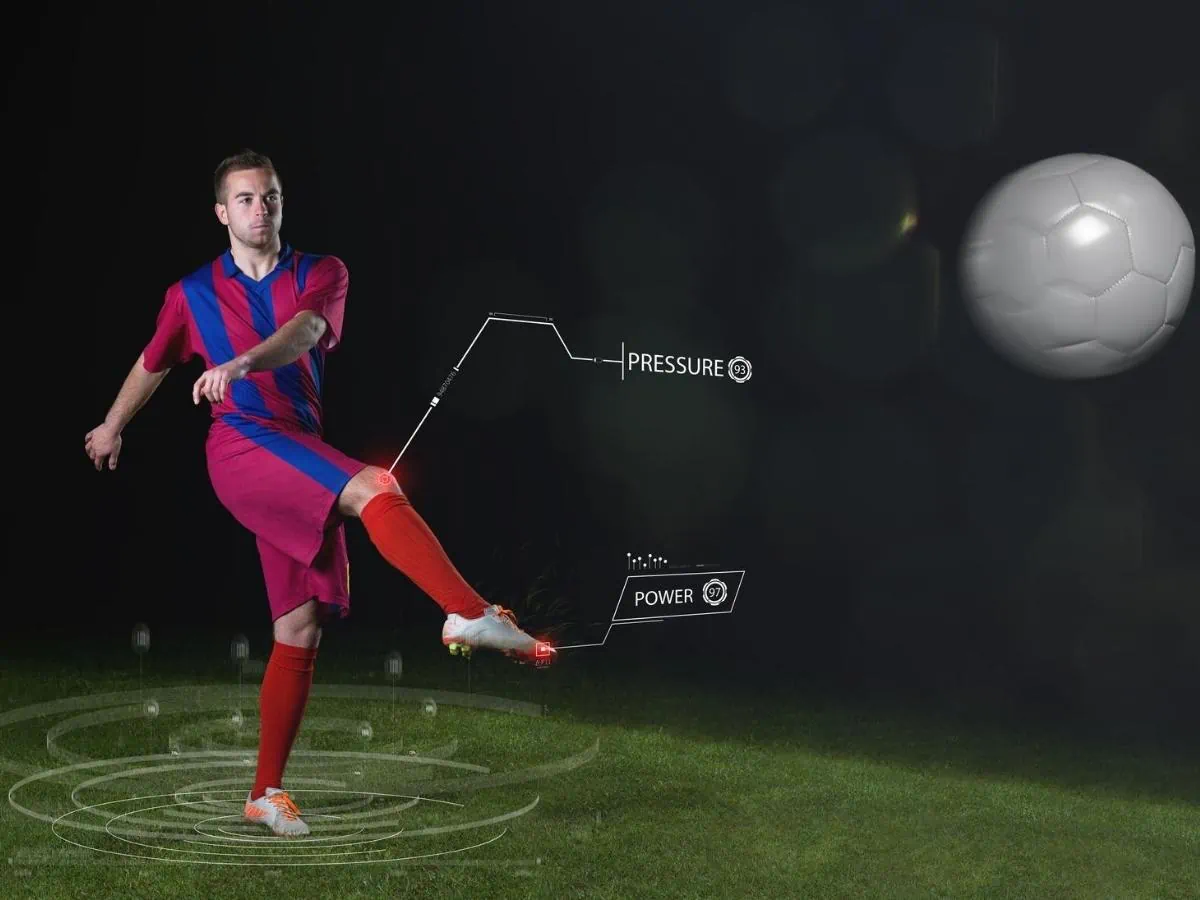
Is soccer just kicking a ball around?
While kicking a ball is a big part of soccer, it’s not that simple. “Just kicking” in soccer is a refined set of techniques, and the game is filled with many of the same essential dynamics as other team sports.
It’s true, you must be able to kick a ball to play soccer, but the game is about so much more than that.
“Soccer is just kicking a ball around.” But that’s for those who don’t know the game.
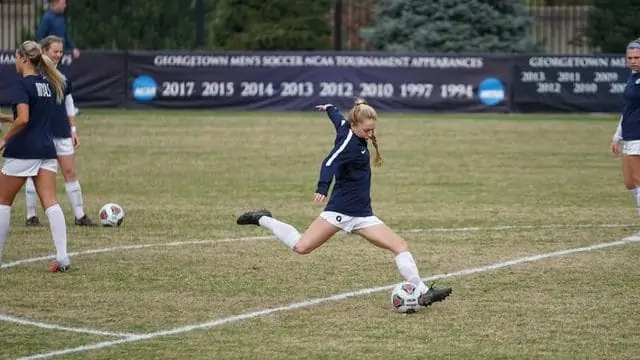
Soccer is more than just kicks
Kicking is heavily associated with soccer, but soccer is more than kicks. Kicking is one method used to transport the ball in soccer, but any given player does not have the ball for the majority of the game.
There are 22 players on the field at a time (11 per team) and only one ball, which means there’s a lot more going on than just kicks.
Some of the other essential elements of soccer include:
- Jogging
- Sprinting
- Agility
- Endurance
- Ball trapping
- Heading the ball
- Defending
- Decision-making
- Teamwork
- Verbal and nonverbal communication
What are the 3 Kicking skills in soccer?
As a dynamic team sport, soccer requires a diverse set of skills. Here are three of the primary skills in soccer:
Passing
Passing, or moving the ball from yourself to a teammate, is one of the most critical soccer skills.
Passing allows a team to move the ball around the field efficiently, and it requires proper technique, accuracy, and the right amount of power.
A study from the University of Queensland found that “Accurate passing and greater ball control are more important for success than high speed, strength, and fitness.”
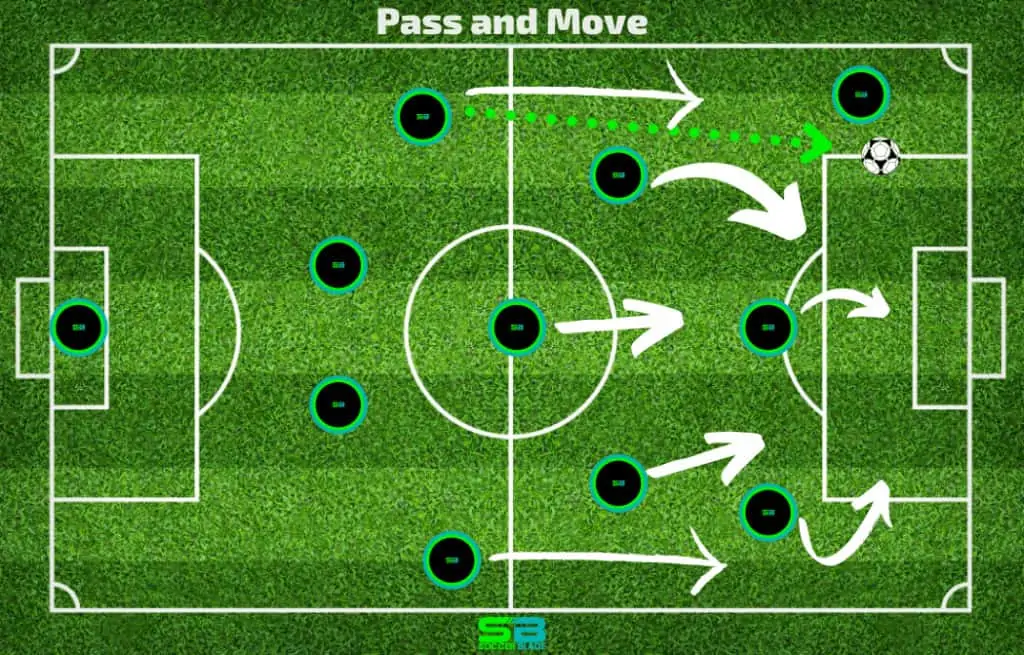
Receiving the Ball
Passing won’t do a team much good if you can’t receive the ball! Receiving is how players bring the ball under control, whether from a pass or a ball in the air.
Being able to receive the ball while standing is essential, but players must receive the ball while moving.
It’s crucial to develop the ability to receive the ball with different surfaces and both feet.
However, receiving a ball may not always be with your feet. Players often need to use their thigh, chest, or head to receive a ball in the air.
Shooting
The only way to earn points in soccer is to score a goal. Shooting is the skill used to get the ball across the goal line and into the back of the net.
Shooting is a specific kicking technique that combines power and accuracy.
Again, players must master several shooting techniques and be able to use both feet so they can score in different scenarios.
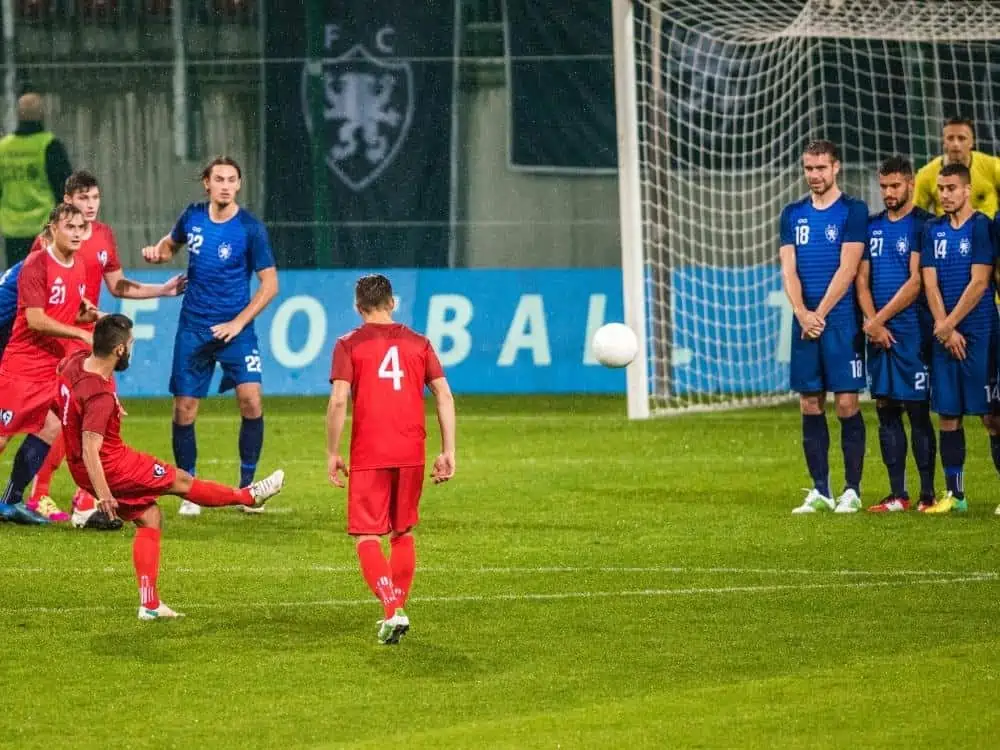
Critical elements of kicking a soccer ball
Even when players do kick the ball, they aren’t “just kicking.” Kicking a soccer ball requires different techniques based on the intent of the kick.
Here are the critical elements of kicking a soccer ball:
Plant Foot
The non-kicking foot is known as the “plant foot.” Correctly positioning the plant foot is essential for the aim and height of the kick. The planted foot should be pointed at the target.
- The plant foot’s toes should be even with the ball to pass the ball on the ground.
- However, to loft the ball via an aerial pass, the plant foot can be slightly behind the ball (but still pointed at the target).
Foot and Ankle Position
The position of the kicking foot is also a key element of kicking a soccer ball.
- For a pass, your foot is turned to the side, with the ankle locked and toes pointed up. The ball is passed most often with the inside of the foot. This foot position looks similar to a golf club.
- Shots are taken with the instep (or laces) of the foot. The foot is pointed down and angled out slightly. The ankle must still be locked.
- The foot and ankle position is similar to a shot to send a long aerial pass. The primary difference is where the ball is struck.
Leg Position
The plant leg is slightly bent at the knee when kicking a soccer ball. The position and movement of the kicking leg depend on the type of kick.
- For shooting and long balls, the kicking leg will come back toward your butt and then swing forward as you strike the ball.
- For passing, the knee is bent, and the leg swings forward from the knee to generate the pass’s force.
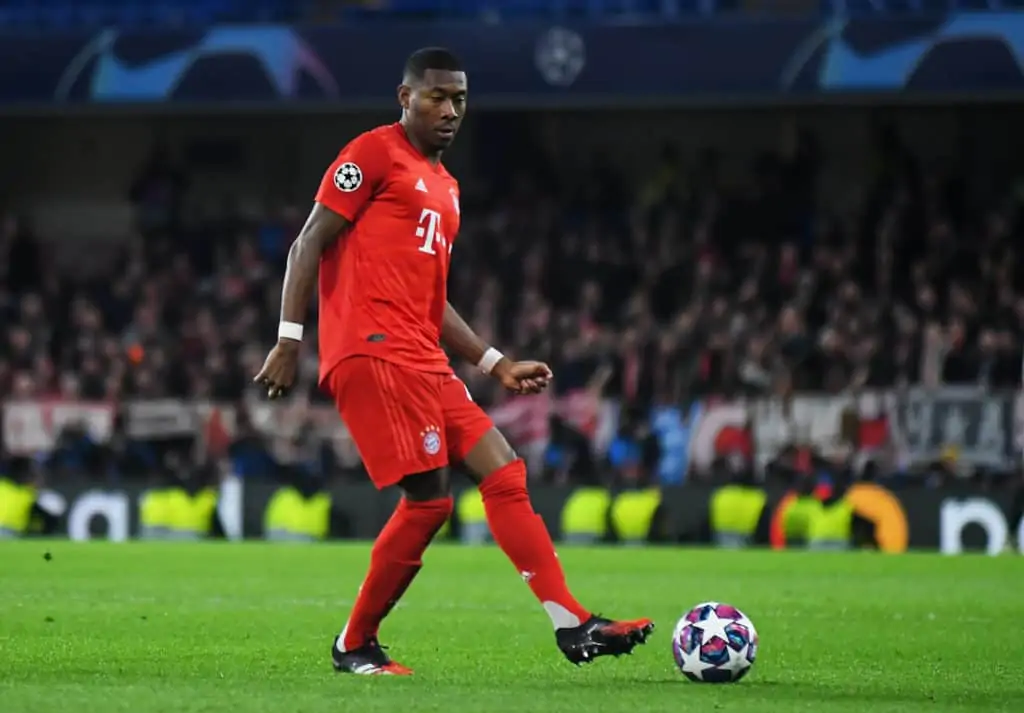
Ball Contact
To move the ball, your foot must make contact with it. Where you strike the ball will also play a role in the type of kick made.
- Aim for the middle of the ball to pass the ball on the ground.
- Connecting with the ball on a shot depends on what type of shot you are making, but most often, players aim slightly below the middle of the ball.
- Connecting with the bottom of the ball (slightly underneath it) will lift it in the air, ideal for long passes.
Follow Through
The follow-through is a continuation of ball contact. After connecting with the ball, the knee extends, the hip flexors, the foot relaxes, and the player lands on the shooting foot.
Following through ensures the kick has enough power and meets its target.
Is kicking a football like kicking a soccer ball?
Soccer isn’t the only sport that involves kicking a ball; football players also kick a ball during punts and field goals.
Some soccer players, like Giants kicker Josh Brown, even join football teams as kickers.
The Difference Between Kicking a Football and Soccer Ball
Even though kicking a football and a soccer ball rely on similar mechanics, they are also very different.
Take it from Brown himself; there are some critical differences between kicking a football and a soccer ball.
- The shape of the ball. A soccer ball is a sphere, but a football has an oblong shape. The wind more heavily influences a football route, so a kicker must also bend and lean it in the right direction when kicking.
- Movement. When kicking a field goal, the ball is held still. This is rarely the case in soccer when people most often strike the ball while moving. Even in the case of a free-kick, where the ball is still, soccer players face a wall of people and a goalkeeper.
- Foot position. Brown hits the football with the inside of his foot, more like a pass in soccer. Players would use the instep to play a similar aerial ball in soccer.
How do you aim when kicking a soccer ball?
To effectively kick in soccer, you must aim for a target. The target may be a teammate, an open space in which a teammate will meet the ball, way up the field out of danger, or into the back of the net.
As mentioned earlier, the elements of kicking a soccer ball contribute to aim.
Here are some tips for aiming a soccer ball when you kick:
- The plant foot must face your target.
- Keep your ankle locked. Your ankle should not be “floppy” when you kick a ball, squeeze it firm to help control the ball.
- Shoulders down. If you lift your chest as you kick, the ball is more likely to sail up into the air (and likely over your target).
- Keep your hips squared. If your hips twist as you kick, the ball will follow.
- Follow through your kick in the direction of your target. Too short of follow-through or a twisted follow-through can change the direction of the ball.
- Keep your eyes on the prize. Looking at your target can help you keep the rest of your body in alignment to kick accurately.
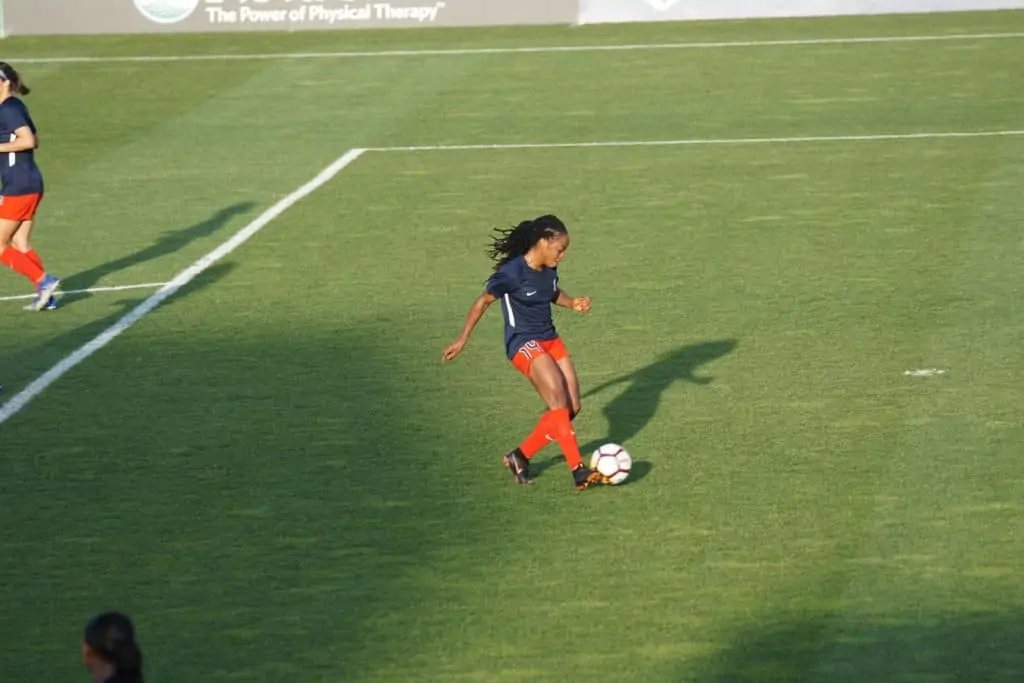
Straight-on Kicking vs. Soccer Style
Most professional football players now use soccer-style when kicking a football. However, they used to use a straight-on style.
Straight-on kicking is when the athlete backs up straight from the ball. They keep the toes up as they approach and “toe punch” the ball forward.
Before soccer became more prevalent in America, football players were not aware of soccer-style and used the straight-on kicking style.
As soccer grew in the U.S. and some soccer players even converted to football kickers, the soccer-style became the standard.
For soccer style, the player steps back 3 yards and then 2 yards to the side to take a diagonal approach to the ball.
This allows the player to follow the soccer kicking essentials above like pointed down toe, using the instep, and follow-through.
For Kicks
While kicking is an integral part of soccer, it’s a vast understatement to say that soccer is just kicking.
The kicking techniques are very precise and used to achieve different types of kicks depending on the player’s intention.
Additionally, soccer requires several other ball handlings, teamwork, and physical skills.
Share the post "Kicking a Soccer Ball (Kick High and Far with Power!)"
Joel is a seasoned soccer journalist and analyst with many years of experience in the field. Joel specializes in game analysis, player profiles, transfer news, and has a keen eye for the tactical nuances of the game. He played at various levels in the game and coached teams - he is happy to share his insight with you.



